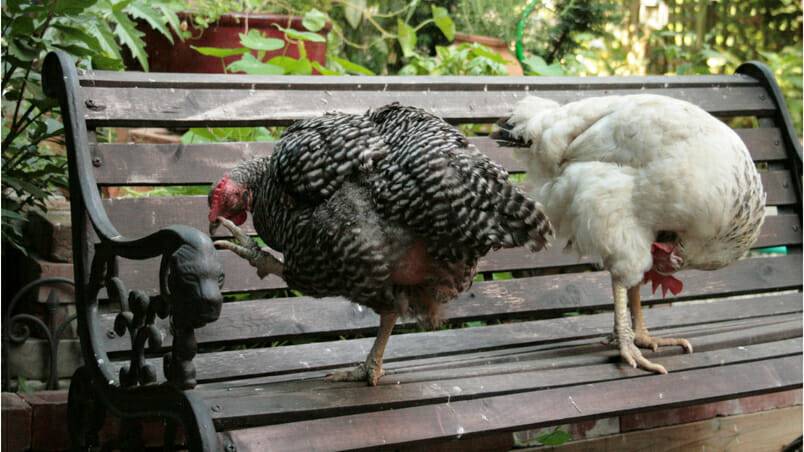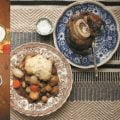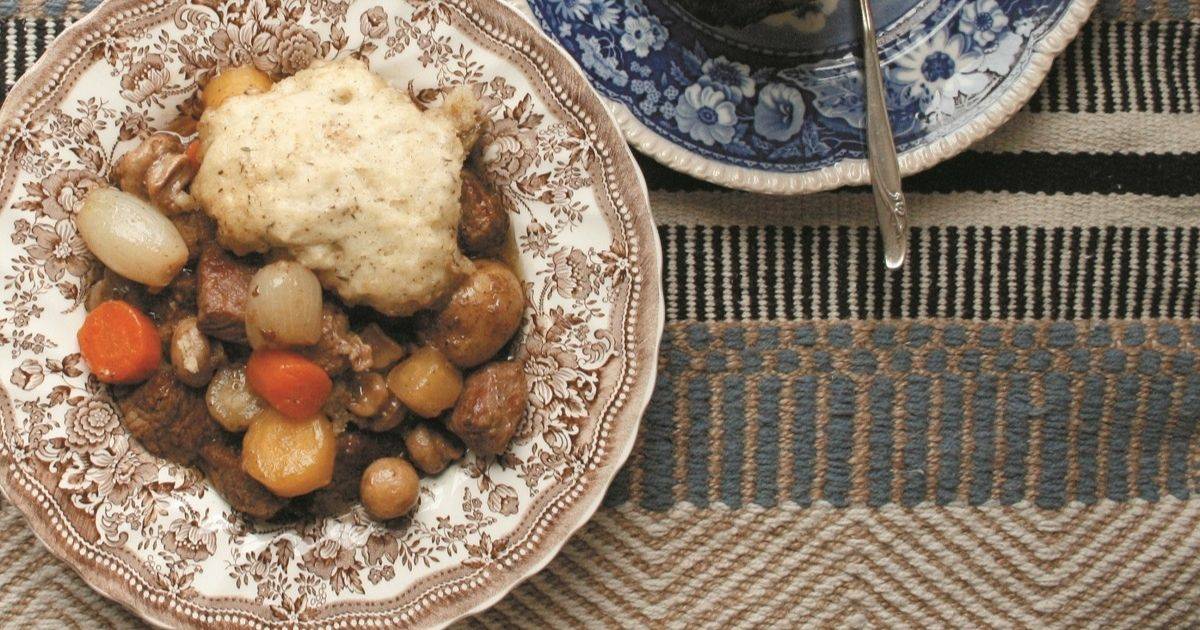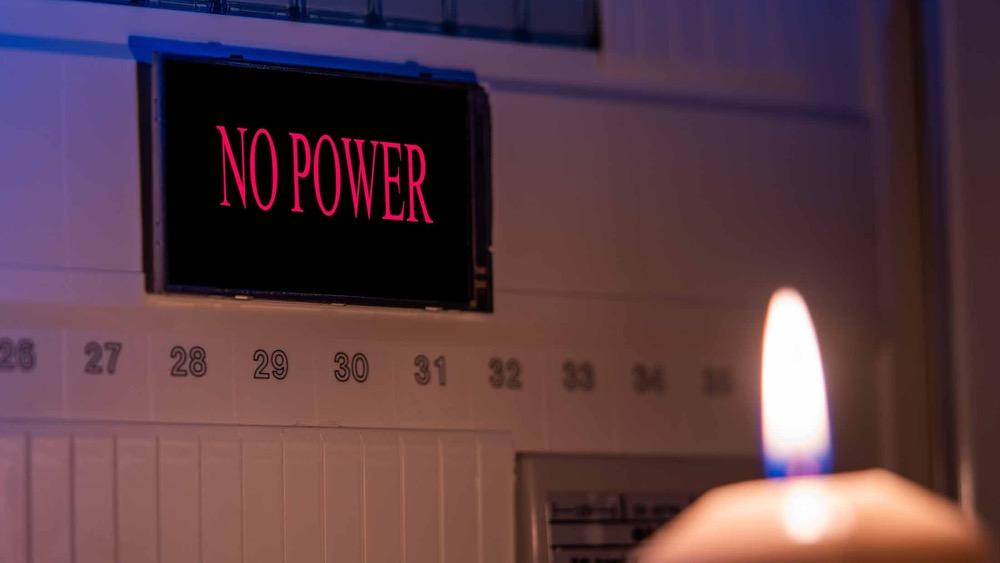Even if you’ve never entertained the notion of raising chickens, Signe Langford’s Happy Hens & Fresh Eggs: Keeping Chickens in the Kitchen Garden, with 100 Recipes has the power to pull you into the renaissance movement. Those who are already part of the growing self-sufficiency army know that chickens are the perfect marriage of food security, animal welfare, organic assurance and eggnog.
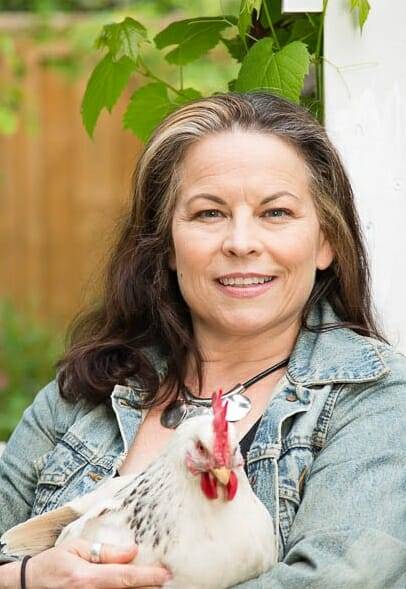
Signe Langford & Miss Vicky
Langford brings mad skills to the table, in addition to 100 decadent egg recipes. The comical Toronto chef, food writer and flock fanatic has created a glossy memoir-slash-cookbook with flexibility. Happy Hens belongs in your kitchen, on your coffee table or beside your bed, with ease. If you are contemplating the romance of just-laid eggs for breakfast, this is your bible. Langford focuses on hen health and happiness, and why hens may be your best helpers in the garden. I’ve seen them in action—they are indeed walking compost bins, strutting garburators, insect fiends, random fertilizers and soil aerators.
Split into seasons, the book dishes practical advice, anecdotes and recipes in equal measure. There are also lists of plants to scratch and sow if you are intent on sharing your space with chickens. The recipes are a colourful and cultural collage from the likes of kitchen heavyweights like Vikram Vij, Roger Mooking and Ted Reader. Even if your current go-to is a fried egg, I’ll put all my eggs in one basket and bet that you’ll be coddling and salt curing yolks by book’s end.
Donna Griffith’s photography is the stuff you pin and heart on Pinterest and Instagram. Scattered throughout, artist Sophia Suanders’ linocut prints and whimsical ink drawings make Happy Hens an easy—and convincing—resource for inspiration. I’m also betting that you’ll want a pair of Blundstones, a few Leghorns, and an egg cutter that will let you precisely lop the top off a shell so you can refill the hollow egg shell with lemon meringue.
For everyone who has stood shell-shocked in the egg section at the grocery store, you’ll get a primer on ethical free-run eggs. We’ve all been intimidated by the jargon and decision making required. What’s the right choice? Consumers have to weigh the merits of purchasing a plastic or biodegradable carton. As for the eggs themselves, should you go for omega-3? Cage-free? Organic? Free range? Free run? Surely just raising your own would eliminate this goose-egg-size headache.
Whether you are practising or questioning, there are pages of considerations that follow hens, much like puppies and even hamsters. There are parasites, predators, heat waves and deep freezes to contend with.
Is Cluckingham Palace life for you? If it is, Langford gives straight-talk lessons about “henopause” and tips for planting herb gardens for your hens. If you’re wondering who lays brown eggs (the Marans and mottled java) or blue (Ameraucana) or white (Leghorns), it’s all spelled out. And if you want to dye those same eggs at Easter, Langford rhymes off tried-and-true all-natural dips made from coffee, soya sauce, beets or spinach.
The memoir thread of Langford’s book is oozing with nostalgia. When she talks about growing up with the usual suspects (dogs, fish, budgies, a tomcat named Wally Walnuts) and chickens, it makes sense. Her apartment-bound urban fantasies of owning her own flock seem reasonable. She sinks hours into coop and exotic breed research (a.k.a. “chicken porn”), despite geography and messy bylaw navigation.
Langford’s chicken crescendo climaxes when she rescues a few ex-battery hens (“ex-bats”): Leghorns and a Rhode Island Red.
She quickly realizes that hen keeping is a natural extension of the kitchen and garden. She prides herself in a five-minute “market trip” for herbs, fresh eggs and veg fixings (all in one swoop). As a professional cook since 1998 (and the former owner of the now-closed Riverside Café in Toronto), Langford offers up a curious and tantalizing mix of anecdotes and age-old egg classics with a twist. As I read sections, my to-try list kept growing, from gin flips to curried devilled eggs to a rather fancy sounding French sabayon.

Scotch Eggs
As per usual, when I read highly fascinating books, I end up reading the juicy factoids aloud to anyone within earshot. Some bits I emailed to my mom? “Hey, did you know that during WWII, the government encouraged Canadians to keep hens?” The “hedonistic pleasure” wasn’t limited to social class. Royals and peasantry alike kept chickens for eggs and meat.
Langford’s raw honesty and admission to having rearing hiccups is what makes Happy Hens a genuine treat. Pointers like “grass is hen heroin” make learning about hen raising completely captivating. Yet she doesn’t paint everything with sparkles, and dutifully warns that you need to prepare for disappointment and disaster when sharing space with chickens. Just like roommates, I suppose.
Feeding chickens in grass, for example, equals no grass. Chickens scratch, and scratch away grass. Unfenced herbs are treated like a Mandarin buffet. Fear not, though. Langford offers solutions, such as rotating schedules of “lawn occupation.” Or, if you’re really digging your manicured lawn, perhaps hens with feathered feet are your best non-home-wrecking option.
The Art of Doing Stuff blogger Karen Bertelsen chimes in, too, writing, “Romantic visions on Pinterest of free range chickens in the garden didn’t show the chicken crap” on the slate tiles, boots and floors inside the house. Also, chickens are known to devour hostas like Doritos.
Lorraine Johnson, author of City Farmer: Adventures in Urban Food Growing, seconds that motion. One of Toronto’s chicken-keeping pioneers, Johnson applauds chicken manure and the role hens can play in aeration and insect decimation. But, she warns, they also ate everything in sight when they had permission to be free range and carefree in her gardens.
Other warnings include collateral damage to fragile seedlings (unless you start building your new cloche collection at winter antique markets or you cover sprouts with makeshift punch bowls or glass pendant lampshades to deter snacking). Did you know that potting soil is a hen magnet? The tiny balls of vermiculite and perlite turn them into feathered Pac-Mans.
Langford also suggests this: Prepare to be watched. And followed. Especially if you have a trowel or shovel in hand that might turn up some fat grubs or slugs.
Midway through the book, I truly felt like I was earning a mini and pleasurable PhD in chicken rearing. Who knew that you could make herbal tea elixirs for baby chicks? Herbs not only dress up omelettes, but also serve double duty in the coops as air fresheners and worry-free pesticides. As a massage therapist, I spent 16 years immersed in all things aromatherapy—why wouldn’t chickens swoon for it, too? Lavender calms the hens, just as it does humans. Mint repels insects and rodents. Dried thyme has powerful respiratory properties. While chamomile helps us peacefully nod off, chickens appreciate it for keeping mites and lice at bay.

Teeny Tiny Lemon Meringues
Ever question those sunset orange yolks? If you’ve travelled outside of North America, you may have noticed how a chicken’s diet is reflected in the yolk colour. For super-orangey yolks, you can feed hens marigold petals, which contain xanthophyll. It will turn your hens’ legs and feet a deeper orange.
Langford is also quick to point out all the lingering poisons. All the helpful herbs in the world won’t undo hen dangers like avocados (fruit, pit and skin), clematis, juniper, mushrooms, acorns, milkweed and poppies.
In between the seasonal academic lessons on anatomy, wing clipping and which heritage beet breeds to grow, Langford’s recipes shine. And this is when you should take an intermission from her book. Whether you attempt the Chinese marbled eggs or the pickled eggs, a tavern staple, this is a book that gives back. One tip alone justifies the entire book: How to make baked sweet potato fries crispy! I have struggled and eaten so many limp or half-charred sweets, desperate to recreate the crunchy shoestring fries that restaurants serve. The answer is eggs: froth them up and toss the sweet potatoes in the eggs and then bake. Thank you, Signe Langford!
Brunch hosts will naturally tune in to the egg recipe repair shop. For anyone who has had a hollandaise go wayward at a critical time, a dash of cold cream and mad whisking will remedy the error. Amateurs will appreciate the introductory tips for boiling eggs. I’ll admit to consistently forgetting whether you boil first and then add the egg, or place the egg in the water and then boil.
There’s lots of debate material to get involved in, as well. Fridge versus countertop for eggs? Help is also here for chronic greenhorn problems, such as peeling backyard eggs (you’ll learn how to separate that pesky shell and membrane), avoiding dry “scrams” (scrambled eggs) and preventing leathery brown omelettes. How do you avoid the green halo in hard-boiled eggs, and vinegary poached eggs? Langford can help. She is like your nonna, your mom, an egg-salad-making church lady, Julia Child, Bourdain and all the old-timey diner cooks rolled into one.
What is evident in Happy Hens is Langford’s love affair with her “ladies.” She makes them chickenade (chicken electrolyte drinks), and hot oatmeal sprinkled with powdered eggshell for calcium, of course, in the winter. She freezes berries and petals and corn in Bundt pans for enrichment treats and even has impromptu spa days for the girls. And I mean the hens, not her friends. Though she probably does that, too—with gin flips and Scotch eggs, no doubt!
As a former spa employee, I took great interest in these so-called spa days. These ladies get foot scrubs with toothbrushes, and a nice petroleum jelly massage on their legs (to deter mites). They have hot baths in apple cider vinegar and sea salt, and get serious attention paid to their combs and wattles.
There are hilarious passages about dealing with the resident Henny Penny, who gets the entire flock anxious, and a “hand-to-paw” recount involving a raccoon and water buffalo burgers.

Signe Langford as a child with her chick
For newbies, there’s an elaborate “chickenese” dictionary. There is a recipe for Hen Poop Tea (for your plants, not house guests) and brilliant egg shell repurposing ideas (for facials, beeswax candles and biodegradable seed pots). There are hot tips for gardeners, too, like saving silica gel packets from new shoes to absorb moisture when drying out seeds for storage.
In the span of 200 pages, I felt like I became a country chicken doctor. I now know that if a hen’s breath smells like beer, she might have a sour, impacted crop (the crop is located at the base of a hen’s neck, at the esophagus, where digestion begins). With this book, you too can become a citizen scientist and talk about bumblefoot and fly strike.
Maybe the better water cooler talk would be to focus on Langford’s teeny-tiny lemon meringues, en coquille d’oeuf, or Ted Reader’s hangover helper, Mucked Up Eggs. These recipes are for all skill sets and palates, and even an autumn read will make you crazy for eggnog French toast.
I’m not sure what other cookbook allows you to so richly experience the chicken-keeping lifestyle. While your breakfast Stromboli is baking, you can read about the perks of chicken therapy and the success of Cobble Hills Farm Sanctuary in Stratford, Ontario, where rescued factory hens and kids from local group homes find confidence and hope together.
You’ll learn dirty secrets about chickens being carnivores, courtesy of Ginger, Langford’s “tiny T. Rex,” who created a “hen roller derby” with a mouse and her hen friends in hot pursuit.
See, you’re hooked. You’re sketching out your coop and assembling your chicken first aid kit already (don’t forget the hemorrhoid cream—you’ll soon learn why).
The biggest reminder in Langford’s book is subtle. It’s a 200-page argument (without yelling!) for eating in sync with the seasons. Langford has effortlessly illustrated the symbiotic relationship between humans, hens and plants. And, like me, you might find yourself daydreaming a little about an egg salad sandwich that came from your very own custom coop.

happy hens & fresh eggs
Jules Torti’s work has been published in The Vancouver Sun, The Globe & Mail, travelife, Canadian Running and Coast Mountain Culture. With experiences as a canoe outtripper, outdoor educator, colouring book illustrator and freelancer, she is thrilled to be able to curate, write and read about the very best things in life.
